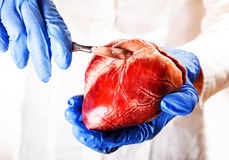Background

Each year approximately 1,500 children are born in the Netherlands with a heart defect. Prognosis and life expectancy of these patients have greatly improved over the past decades, especially as a result of the development of new operative techniques. As a consequence of the successes of cardiac surgery, the majority of these children now reach adulthood. This implies the emergence of a new category of patients: adults who were born with a heart defect (congenital heart disease). A rough estimate of the current number of adults with congenital heart disease in the Netherlands is between 30.000 to 50.000 patients. This number is growing steadily at a yearly rate of approximately 5%. In addition, there are an estimated 25.000 children with congenital heart disease. Thus, the total number of living patients born with a cardiac defect is approximately 50.000 individuals.
Since it concerns a new, rapidly growing, patient population with often substantial (postoperative) morbidity it is important that comprehensive knowledge regarding the specific problems of this category of patients is available. The CONCOR registry was initiated to make an inventory of the epidemiology and specific morbidity of adult congenital heart disease at a national level.
Recent years have seen a strong surge of interest in the genetic causes of congenital heart disease. Rapid progress is being made in identifying which genes are involved in the development of the heart. Genetic changes may give rise to congenital cardiac defects and the knowledge of the genetics of heart defects is likely to increase strongly in future years. Furthermore, most of the patients with congenital heart disease now live into their reproductive age. These considerations emphasize the urgent need for intensive genetic research, which requires large numbers of patients.
The CONCOR registry was started in 2002. The first goal was to include the adult patients under treatment at one of the eight academic hospitals in the Netherlands in the registry. Data entry of patients under treatment at non-academic hospitals was started in 2004. At present (September 2021), more then 17.000 patients from 107 hospitals have been included. 6000 of these patients blood samples for DNA analysis have been collected (see further under the heading Progress.



